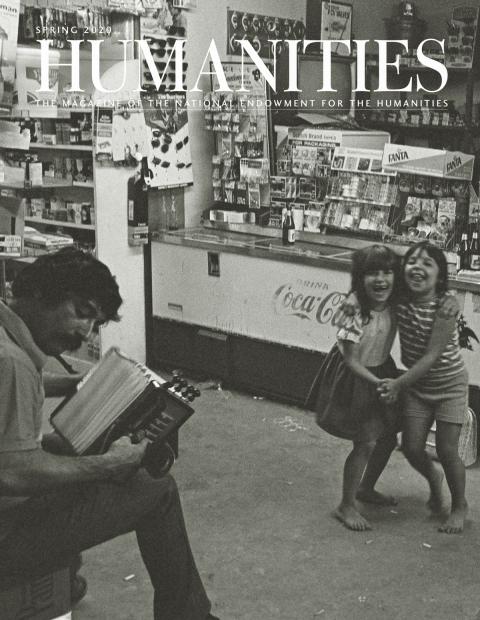Ohio What do we think about when we think about Ohio? If you pay attention to the news, it is fairly likely that you think about opioid abuse.
According to the National Institute on Drug Abuse, in 2017, Ohio was second in the nation in deaths resulting from opioid overdoses. “There were 4,293 reported deaths—a rate of 39.2 deaths per 100,000 persons, compared to the average national rate of 14.6 deaths per 100,000 persons,” the NIDA reported.
To scholars Daniel Skinner and Berkeley Franz, the numbers—and the perception that goes along with them—are alarming. “To those who love the state and have great hope for it, it is depressing to realize that Ohio is now nationally known for being an epicenter of opioid addiction and overdose,” Skinner and Franz write in the introduction to their recent book, Not Far from Me: Stories of Opioids and Ohio.
Published in 2019 by Ohio State University Press, Not Far from Me takes full measure of the opioid epidemic in the Buckeye State. Yet, instead of simply presenting another recitation of facts and figures, Skinner and Franz opted for an approach rooted in the humanities. The coeditors rounded up first-person submissions from Ohioans from all walks of life, who each had something to say about the crisis.
“The numbers certainly are really important,” says Franz, assistant professor of community-based health at Ohio University’s Heritage College of Osteopathic Medicine. “They help us to understand the scope of the problem, how pressing it is, how deadly it is, but the humanities really helped us engage with people’s experiences.”
Not Far from Me presents a variety of viewpoints. Those serving prison terms because of opioids are given voices; so are their relatives. Especially grueling are the accounts of those who lost children or siblings to the drugs, as they describe their feelings of helplessness watching a loved one spiral down, out of reach. A narrative from retired bedside nurse Hank Rossiter, of Kidron, reflects on the reasons behind the opioid epidemic, pointing to the health-care industry’s emphasis on “pain-free recovery,” saying, “I believe that the current situation is the culmination of a perfect storm of supply, demand, marketing, and culture.”
Other contributors use alternate means of expression. Portsmouth High School art instructor April Deacon presents paintings she made of former students whose potential and promise was apparent to her despite the fact that most had felt the impact of the crisis. Barbara Costas-Biggs, a poet in southern Ohio, uses verse to remember a friend, Eric, who perished after using a transdermal oxycodone patch to get high.
The team considers many well-trod explanations for opioid abuse to be insufficient. “We both see this issue as a fairly complex, broadly social phenomenon—for example, not a moral failing or some of the simpler narratives that people have latched onto politically,” says Skinner, associate professor of health policy at Ohio University’s Heritage College of Osteopathic Medicine. The individual perspectives contained within Not Far from Me help combat such stereotypes.
Skinner and Franz began their work three years ago with an open call for contributions. They placed flyers far and wide and sought input from educators, health-care workers, poets, and law enforcement professionals. “Everybody knows somebody,” Skinner says.
Casting a wide net, Skinner and Franz also scoured news stories, with the hope of learning about community members making efforts to combat the crisis. “We just picked up the phone and cold-called people we’d seen in the news or we felt like they probably had a story to share,” Franz says.
Among those approached by Skinner and Franz was Warren W. Hyer, the executive director of the Central Ohio Symphony, who, starting in 2013, spearheaded a program of therapeutic drumming for adults and juveniles passing through the court system in Delaware County—some of whom, Hyer deduces, have issues with opioids.
“I don’t always know why they are there,” says Hyer, who contributed a chapter to the book. “I do know that we’ve sat there and I’ve had somebody say, ‘I’m here because I want to get out of this. This is my third time . . . just look at my arms,’ and it’s full of holes all the way up and down.” The drumming is not intended as a cure-all, but gives participants a new voice of sorts. “This really gives them a chance to talk in a different kind of way,” Hyer says.
A grant from Ohio Humanities supported the creation of a website (NotFarFromMe.org) and allowed the coeditors to take their mission on the road, presenting book excerpts in community conversations at public libraries. “When people heard somebody else’s story, they really felt more empowered to share their own story,” says Franz.
Skinner tells a story he and Franz heard from a public-health official during a library session. The official remembered some adolescents stopping by a local public-health organization in search of the medication Narcan, which is intended to revive those who have overdosed.
“Their first, immediate judgment was, ‘Oh, these kids must be doing drugs,’” Skinner says, but officials quickly realized that the teens were stockpiling the medication in anticipation of an overdose of a parent. “These kids were preparing; they were smart,” notes Skinner. “Those are the kinds of things that you can only grasp through storytelling.”


